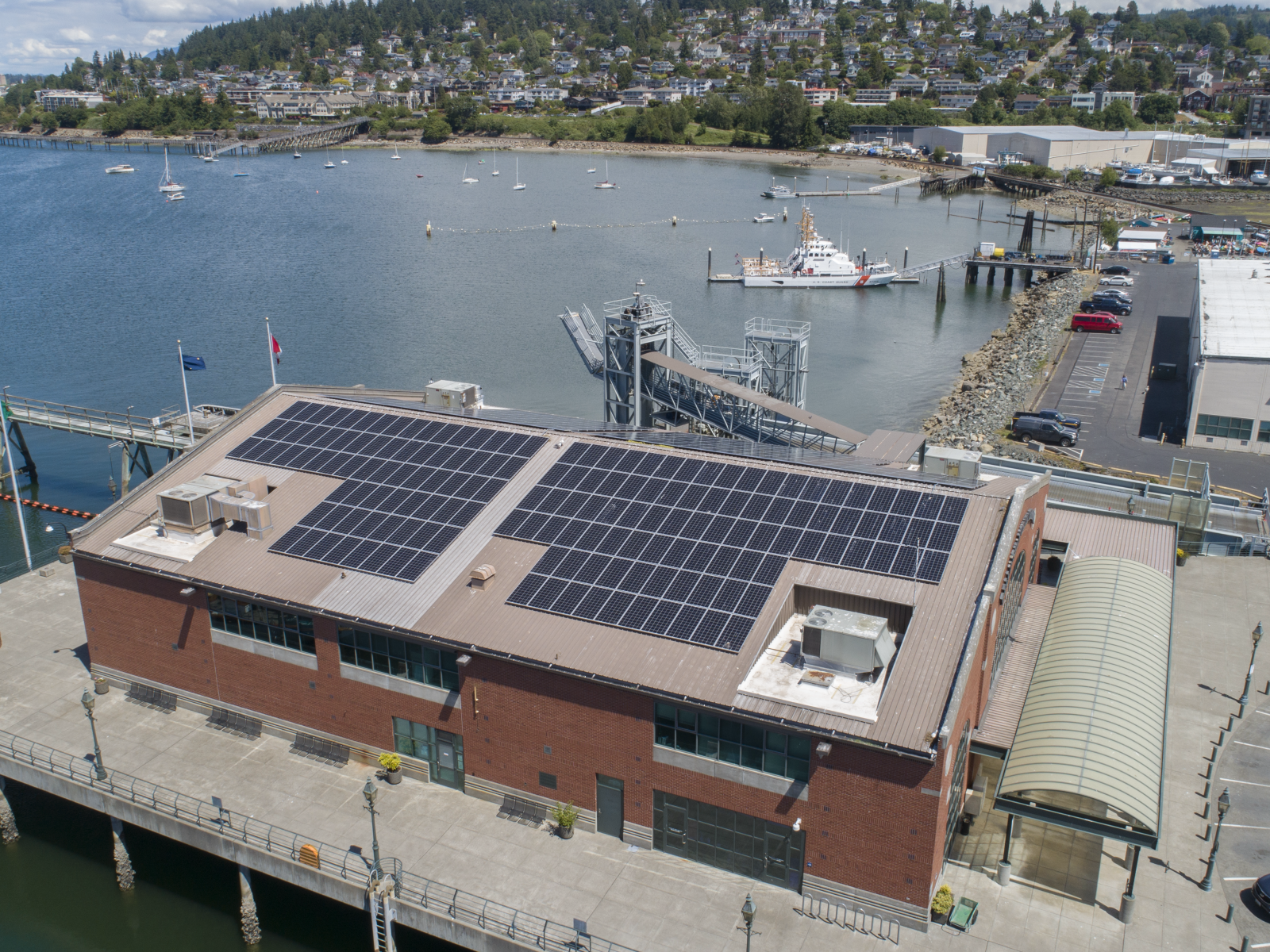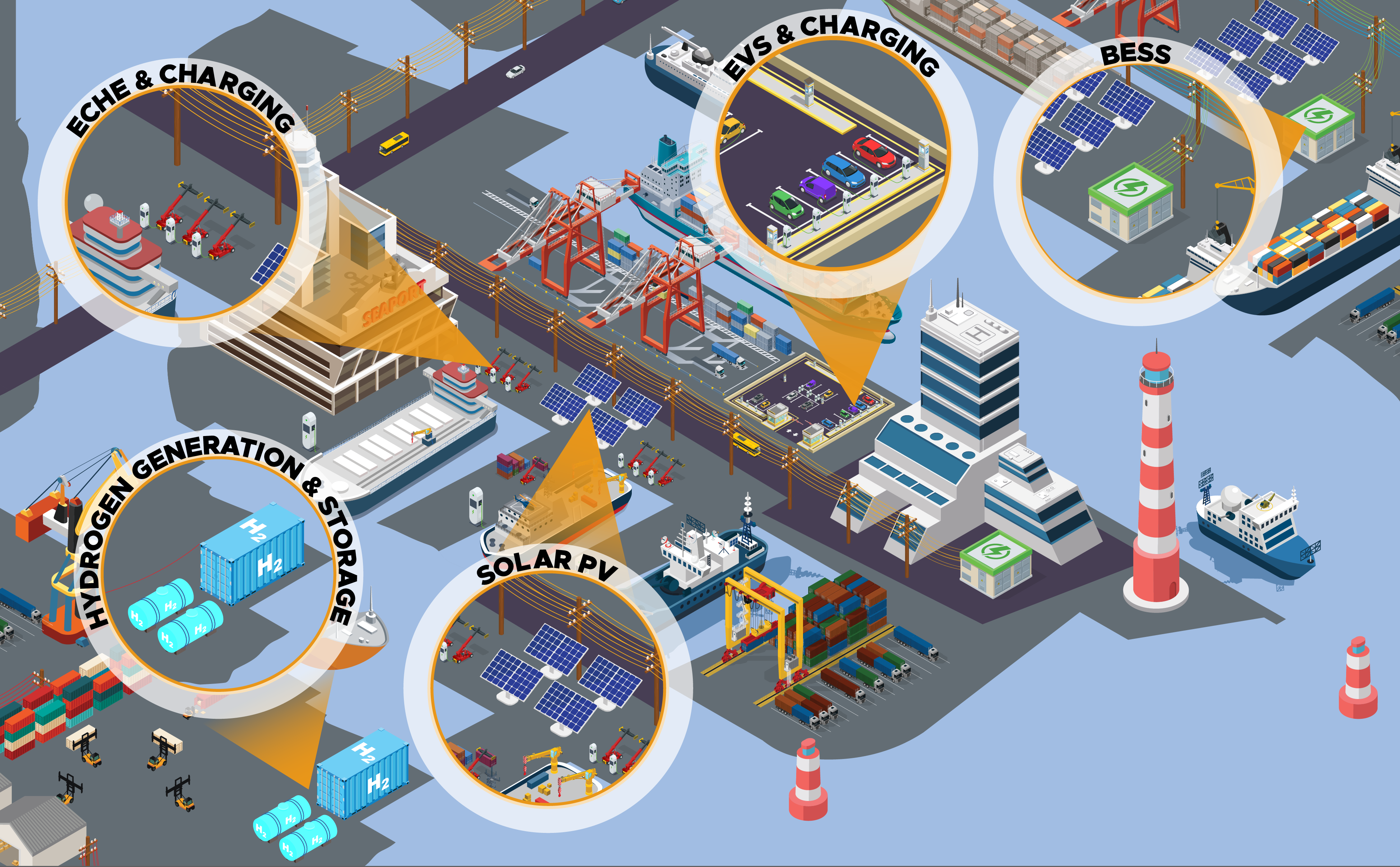PNNL Publishes Port Electrification Handbook Featuring Microgrids
Guiding port commissioners toward a new energy future

Advances in clean energy technology, such as microgrids and batteries, are enabling electrification of port infrastructure and charging of heavy-duty vehicles traditionally considered hard to electrify.
(Image: Port of Bellingham, Washington)
Maritime ports, bustling hubs of global trade, are emerging as the new frontier for electrification. Advances in clean energy technology, such as microgrids and batteries, are enabling electrification of port infrastructure and charging of heavy-duty vehicles traditionally considered hard to electrify.
A newly released Port Electrification Handbook provides a comprehensive reference to aid the nation’s maritime and commercial ports during this energy transition. The handbook was led by Pacific Northwest National Laboratory (PNNL) as part of the Microgrid Research and Development Program, an effort by the Department of Energy, Office of Electricity to make microgrids essential building blocks of future electric delivery by 2035.
Although there is a special focus on microgrids, the handbook covers the entire spectrum of electrification technologies, including shore power systems, energy storage, renewable energy, and charging infrastructure, along with various end uses, like buildings, refrigeration, and cargo handling.

A microgrid is a self-contained power grid that can operate independently or connected to the power grid to improve customer reliability, resilience, fuel efficiency, runtime durations, and affordability. Microgrids are a key technology for port electrification because they can provide reliable, clean electricity to ports even in the event of a grid-scale outage, and they can be designed and managed to meet each port’s unique energy demands.
The handbook emphasizes the critical evaluation and planning phase of port electrification projects, as well as benefits and challenges to consider during these phases, including economic feasibility, resilience impacts, and environmental justice.
“We want the handbook to be a practical tool for a port commissioner evaluating the potential benefits of deploying a port microgrid or a terminal operator identifying the right technology for their electrification project,” said Shannon Idso, principal investigator for the handbook.
The handbook is a product of extensive collaboration with seven guiding ports (including Long Beach, Detroit, and Anacortes), along with industry groups like Washington Maritime Blue, and with contributions from Sandia National Laboratories.
Why maritime ports?
Ports are also major hubs of economic activity, handling the import and export of goods, and are often associated with high levels of pollution and greenhouse gas emissions, which can disproportionally affect communities in proximity. However, transitioning ports away from their longstanding dependency on fossil fuels is challenging because of their size, complexity, and resource mix.

The handbook comes at a crucial turning point for the industry, as the International Maritime Organization works to achieve net-zero emissions by 2050. Maritime activities underpin the U.S. and global economy, currently at significant environmental cost. According to the International Council on Clean Transportation, such activities account for approximately 3 percent of global carbon emissions and release harmful pollutants into the environment that inequitably affect nearby communities.
“Port electrification has attracted the interest of diverse stakeholders for its potential benefits to our multi-modal transportation system, “ said Idso, “but it's not just about decarbonization; port electrification can strengthen national security, energy independence, and improve environmental justice."
The handbook is now available for download. Visit the Port Electrification Handbook website to access an Executive Summary and Total Load Profile Workbook.
Published: May 21, 2024